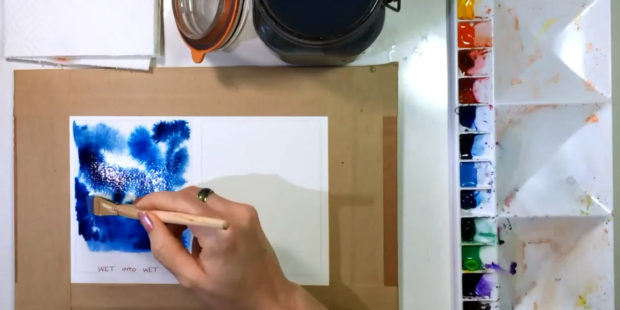Learn the art of Watercolour painting:
One of evolutions of paintings has been the watercolour painting which has come a long way from limited pale landscapes and floral depictions. They are really vibrant, make vivid appearances and are really impressive. But, it demands more planning and care because it’s product quality dependent art. It is all about blending, texture and producing layers of related colours. It is recommended to go for a watercolour painting techniques classes for beginners and look to advance later. There are some important factors about materials, products and blending along with techniques in watercolour painting.
- Material Quality:
- High quality watercolour paints which are easier to blend, bright and colourfast.
- Plus, a high quality water colour papers being either hot or cold pressed versions. Some are better on wet on wet and others for wet on dry painting.
- Planning:
- Grab the basic concepts of layering and blending first.
- Plan the painting in advance and sketch it with appropriate materials. Plan the areas to be painted first and decide the areas to add finer details and depth.
- Blend the colours correctly and apply them. Plastic wrap, alcohol, tape, sea salt contribute to successful painting.
- Blending:
- Know the perfect combinations of colours like yellow and little blue form green colour. Also, know the amount of water to be added to make it lighter or darker.
- Wet on wet painting, requires paper to be dipped in clean water or paint the water on paper after mounting. When dry and completed it can be cut off and prepared for display.
- Wet on dry painting requires a dry surface to be painted by watercolour and carefully drawn lashes.
- You can also combine both techniques, first apply wet on wet painting, let it dry and add details with brushes and paint by wet on dry technique.
Subtle Additions to make vivid paintings:
When in progress, you shall know what colour to apply where in advance. The pattern may vary as some may prefer main to details and vice versa. When painting in landscape, the sky shall be painted first with realistic affects which require training. Most artist add the darkest colours in smallest areas. Another interesting way is to lay colours and then remove part of paint to achieve textures of wood or ground. The application of having dimensions to your painting by adding depth and distance is really wonderful. One needs to have an expert teaching to practice its art and learn tricks.
Well, perhaps the most important factor is to add your own element and develop a style as you learn to choose your own subjects and plan the painting. The watercolor background will present you a framework of principles to play around and manoeuvre them for your skill.



